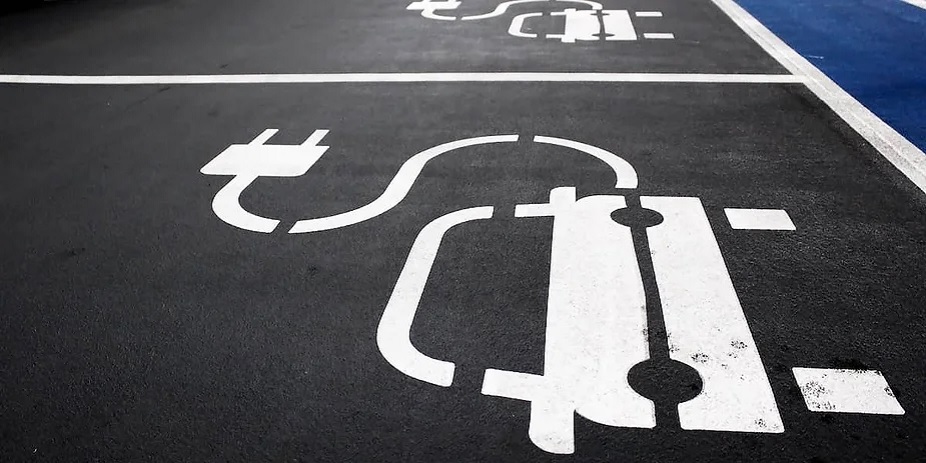EV infrastructure planning checklist for government fleets

When you are planning your EV infrastructure, you need to start by thinking about your charging needs. Determine whether you plan to use public charging stations, build charging stations in strategic locations, or have all your EVs return to home base each night.
There’s also a big difference in the type of charging stations that you plan to build. The first step is to analyze your charging needs and equipment options.
Charging infrastructure planning
Decide on Level 1, Level 2, and Direct Current fast charging options
The types of chargers that you choose will determine how fast your EVs can be recharged:
- Level 1 chargers: These 120-volt AC outlines can take forty to fifty hours to charge a battery-powered EV (BEV) to 80% from empty. If your fleet uses plug-in hybrid vehicles (PHEVs), charging time can be reduced to five to six hours.
- Level 2 chargers: These use 240-volt AC or 208-volt electrical services. BEVs will typically take between four and ten hours to charge to 80%, while PHEVs can reach these levels in one to two hours.
- Direct Current Fast Charging (DCFC): Provides the fastest charging capability. BEVs can be recharged to 80% in twenty minutes to an hour. Most PHEVs currently available do not work with fast chargers.
Most fleet facilities opt for Level 2 or DCFC chargers in their EV infrastructure planning. For example, a Level 2 charger generally works fine if vehicles are charging overnight. However, there are pros and cons to each. For instance, equipment for a Level 2 charger is less expensive, but DCFCs may reduce land use and have lower installation costs. According to the U.S. Department of Energy, if your fleet vehicles plan to drive more than 100 miles a day, you’ll likely want to opt for fast charging.
You’ll also want to make sure you have the right charging equipment. There are different types of connectors for vehicles.
Plan the site level
Regardless of the type of charging stations you decide on, site-specific planning must occur. The site or sites that you choose can impact costs significantly, depending on:
- Existing infrastructure
- Geographic location
- Required trenching
- Wiring and upgrades
- Labor costs
- Permitting
Coordinate early with your utility company
Before deciding on anything, coordinate early on with your utility company. It may have the expertise to guide you, and it can also help you assess the local grid infrastructure to ensure that it can provide adequate coverage.
You’ll want to take rates and pricing structure into account too, as certain locations and practices will lead to higher utility bills.
Check for incentives
Various federal, state, and local incentives should be explored during EV infrastructure planning. Many utility companies are offering grants or discounts. The Inflation Reduction Act recently expanded the Alternative Fuel Infrastructure Tax Credit to extend tax credits for charging infrastructure to government entities.
Gather quotes from suppliers
Per your procedures and policies for procurement, you will need to gather quotes from suppliers for equipment. You can leverage bulk-buying power by using Sourcewell’s cooperative purchasing agreements. These competitively-sourced, ready-to-use contracts are available to government entities.
Make purchase decisions
With your due diligence complete, you will need to make purchase decisions and allocate funds accordingly.
Charging infrastructure installation
Once you have settled on equipment and location, it’s time to get construction underway.
Develop your engineering plan
Detailed engineering plans for your EV infrastructure planning need to be developed for installation. Work with your suppliers and vendors, utility providers, and other government agencies to ensure that you comply with permitting and regulatory requirements. Coordinate with appropriate contractors and suppliers for the building process.
Develop policies and train staff
While your EV infrastructure is being completed, developing processes and policies for use is a good idea. Many of your employees may not be familiar with EVs, so you’ll need to provide guidance.
Develop use policies
Setting policies like how often and when vehicles are charged can make a big difference. Many organizations require routine charging to take place overnight or during off-peak hours when there is a lower demand on the power grid.
Some entities enforce “peak shaving” to limit charging rates during peak demand times. This can limit the amount and speed at which electricity can be drawn or augment power with local energy storage to reduce the load from the grid. For example, storage options can enable power to be pulled during non-peak times when energy costs are lower and then charge vehicles without directly connecting to the grid.
You may also need to develop other policies, such as infrastructure use or restrictions for personal EVs.
Conduct driver training
Staff training will be crucial. For example, many drivers may feel uncomfortable taking out an EV without it being fully charged. But depending on the number of miles driven, this may not be of concern.
Employees should also understand the nuances of driving an EV. Most EVs let you turn off certain features to conserve energy, such as cabin heating and cooling, accessories, and regenerative braking. So, if someone’s vehicle is running low on a charge, such practices can extend its range.
Just like internal combustion engines, poor driving habits can also result in more energy consumption. High speeds can cause excessive wind resistance, which can impact range.
Conduct maintenance training
EVs typically require less maintenance, as there are significantly fewer moving parts. However, you will need to make sure your technicians have the proper tools, and you’ll also provide them with the essential training to maintain your fleet.
Installing telematics that help flag potential problems and plan for proactive maintenance can help. Sourcewell has cooperative agreements with telematics suppliers for EVs.
How Sourcewell helps with EV infrastructure planning
Sourcewell can help streamline your procurement process and save time and money. By leveraging the bulk-buying power from 50,000 various organizations, it can lower your costs. Its ready-to-use contracts are competitively sourced, meet most local and state mandates, and are available to government and education entities at no additional cost.
Sourcewell awards contracts in electric vehicle supply equipment. These contracts assure that government entities can take the first step in creating the infrastructure to support green initiatives. See how Sourcewell can save you time and money while getting the fleet equipment that you need already on contract.


